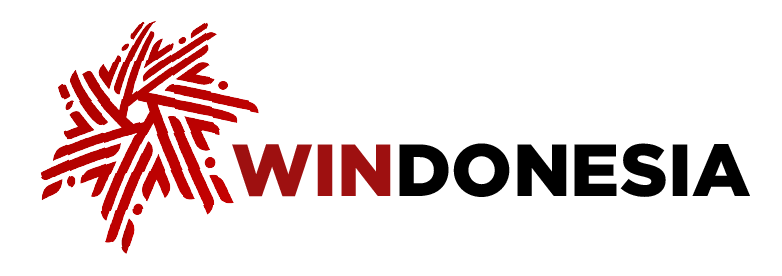Sector
Finance
Indonesia’s financial sector has been flourishing over the past half decade. The COVID-19 pandemic period, while being a time of austerity for most sectors, led to revolutionary innovations in Indonesia’s financial services industry, particularly in fintech. From December 2020 to December 2022, total assets of the fintech sector grew by 48.54 percent from 2020 to 2022. This growing trend continued even after the pandemic lockdowns ended, as total assets in fintech grew by 30.8 percent from December 2022 to December 2023.
View moreFinance
Indonesia’s financial sector has been flourishing over the past half decade. The COVID-19 pandemic period, while being a time of austerity for most sectors, led to revolutionary innovations in Indonesia’s financial services industry, particularly in fintech. From December 2020 to December 2022, total assets of the fintech sector grew by 48.54 percent from 2020 to 2022. This growing trend continued even after the pandemic lockdowns ended, as total assets in fintech grew by 30.8 percent from December 2022 to December 2023.
With fintech paving the way forward, traditional banking followed suit by revolutionizing its services. From 2022 to 2023, the banking industry’s fund distribution increased by 6.28 percent, source of funds increased by 6.33 percent, and total assets in the industry grew by 6.98 percent, reaching a total of US$8.22 trillion. Moreover, even regional banks have been benefitting from this wave of innovation. For the same period from 2022 to 2023, the regional banking sector saw a 7.67 percent in distributed funds, an 8.08 percent increase in source of funds, and a 7.52 percent increase in total assets, reaching a total of US$137.96 billion.
Innovations in Indonesia’s finance sector extend beyond financial services. On September 2023, the Indonesian monetary authority, Bank Indonesia (BI), introduced three pro-market monetary instruments that function as short-term fixed income securities with high coupon rates. The three instruments, SRBI, SUVBI, and SUVBI, were able to collect Rp 409 trillion (US$25.2 billion), US$2.31 billion, and US$387 million, respectively.
Particularly in the case of the SRBI, this instrument represented an innovative way to attract capital flow from abroad during a period of high credit costs and slow investment. Approximately 20.77 percent, or Rp 85.02 trillion (US$ 5.26 billion), of the total outstanding SRBI were owned by non-Indonesian residents, underscoring the SRBI’s success as a monetary instrument.
Even when compared to other countries in the same region, the Indonesian finance sector stands out for its stability against fluctuations. Throughout 2023, the global cost of credit was high due to hawkish Fed policies made to curb US inflation, resulting in a stagnation of capital flow on a global scale. Entering the second quarter of 2024, the composite index of many Southeast Asian countries such as Singapore and Thailand recorded price decreases compared to the same period last year, reaching -3.96 percent and -13.9 percent on the Straits Times Index (STI) and the Bangkok SET index, respectively. Meanwhile, the Jakarta Stock Exchange Composite Index (JKSE) recorded a price increase of 5.18 percent for the same one-year period.
In summary, the Indonesian financial sector stands out for its stability and consistency, maintaining growth through innovation even during periods of austerity or global uncertainty. This consistency is also reflected in its GDP, which grew by 7.4 percent from 2022 to 2023, contributing roughly 4.16 percent to the national GDP in 2023.
Latest News
In a surprising turn of events to cap off the year, Nahdlatul Ulama (NU), Indonesia's largest Muslim organization, has been shaken by turmoil that many observers are calling an internal coup. At the center of the storm is the sudden political ousting of Yahya Cholil Staquf as chairman of NU’s executive body Tanfidziyah.
The catalyst for his removal was Yahya's invitation of Peter Berkowitz, an academic described by critics as having ties to an "international Zionist network", to an internal NU event in August. Yahya, who has a history of engagement with Israel, apologized for the invitation, but it was to no avail.
While Yahya has refused to yield his position, the Syuriah, the organization’s supreme council, moved unilaterally. In an official plenary session held in Jakarta on Dec. 9, the council named senior NU cleric Zulfa Mustofa as the group's acting chairman. The move carried significant political weight, evidenced by the attendance of high-profile government officials and senior NU members: Religious Affairs Minister Nasaruddin Umar, Social Affairs Minister Saifullah Yusuf and East Java Governor Khofifah Indar Parawansa.
At face value, the move against Yahya appears paradoxical. Since his election as chairman of PBNU’s Tanfidziyah in 2021, Yahya has been widely perceived as a staunch ally of the ruling government. Under his leadership, NU has taken pragmatic, some say controversial, steps to align with state policies. Most notably, this included accepting mining concessions under a government scheme allowing mass organizations to manage coal mines.
This concession was formalized through a controversial revision of the Mining Law earlier this year. The law was ratified in just three days without meaningful public or expert consultation, sparking significant backlash. Supporters framed the deal as a path to financial independence for NU, while critics viewed it as a moral compromise that tethered the religious organization too closely to extractive interests and state patronage.
That said, internal power struggles are not new to the current political climate. Late last year, when President Prabowo Subianto was still president-elect, the Indonesian Chamber of Commerce and Industry (Kadin) underwent a similar upheaval. Its then-chairman, Arsjad Rasjid, who had led rival candidate Ganjar Pranowo's campaign, was ousted in favor of the Prabowo-backed Anindya Bakrie. Arsjad initially contested the move as unconstitutional but eventually stepped aside after a compromise was reached.
However, the current NU debacle presents a crucial difference. The Kadin coup was a move against a political rival. Yahya, by contrast, has given no indication of opposing state authority. If Yahya is indeed aligned with the government, why has he become the target of an internal purge?
Observers point towards a proxy war between business factions. One faction within NU is believed to be close to Garibaldi ‘Boy' Thohir, a prominent coal magnate and brother of Youth and Sports Minister Erick Thohir. Another faction is linked to Hashim Djojohadikusumo, a key political financier and Prabowo's brother. Yahya has often been associated with figures close to Hashim, raising the question: why would a faction linked to the President's inner circle allow, or perhaps even orchestrate, his removal?
The contradictions deepen when considering the role of former vice president Ma'ruf Amin. A senior NU cleric, Ma'ruf has long been one of Yahya's most important allies. Yet, Yahya's replacement, Zulfa Mustofa, happens to be Ma'ruf's nephew. Zulfa claims he received his uncle's blessing to assume leadership.
This claim, however, clashes with the former vice president's public stance. Ma'ruf has openly rejected the manner of Zulfa's appointment, declaring Yahya's ousting illegitimate. He argues that under the group's constitution, a change in leadership cannot occur through a mere plenary session; it requires an Extraordinary Muktamar (Congress), reserved for emergency situations.
With NU now effectively split into dual leaderships, and Yahya continuing to assert his legitimacy, the organization is trapped in a stalemate marked by paradoxical power plays. Given the magnitude of the rift, it remains to be seen whether the Prabowo administration will intervene to resolve this quiet coup d'état.

